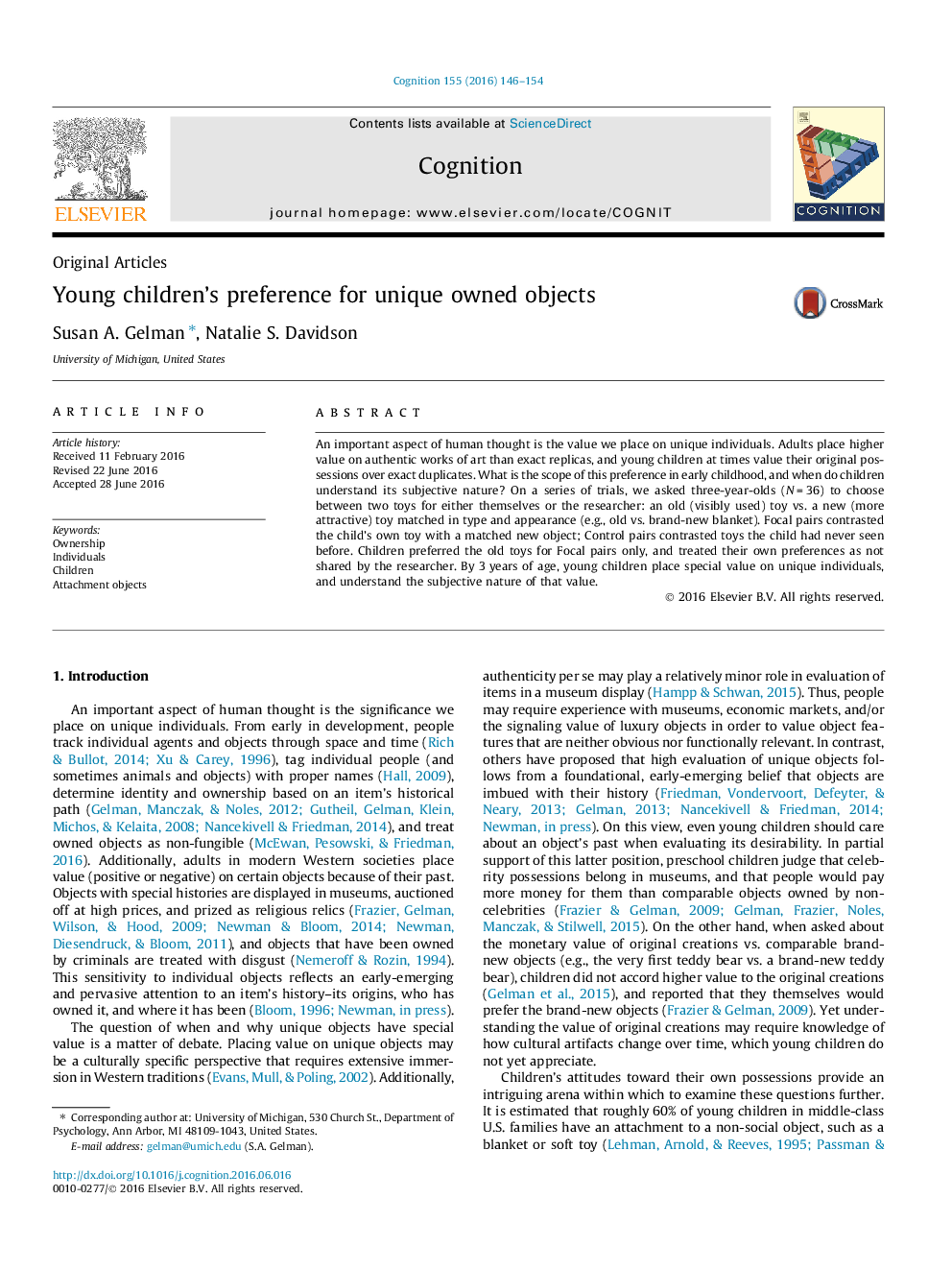| Article ID | Journal | Published Year | Pages | File Type |
|---|---|---|---|---|
| 7285825 | Cognition | 2016 | 9 Pages |
Abstract
An important aspect of human thought is the value we place on unique individuals. Adults place higher value on authentic works of art than exact replicas, and young children at times value their original possessions over exact duplicates. What is the scope of this preference in early childhood, and when do children understand its subjective nature? On a series of trials, we asked three-year-olds (NÂ =Â 36) to choose between two toys for either themselves or the researcher: an old (visibly used) toy vs. a new (more attractive) toy matched in type and appearance (e.g., old vs. brand-new blanket). Focal pairs contrasted the child's own toy with a matched new object; Control pairs contrasted toys the child had never seen before. Children preferred the old toys for Focal pairs only, and treated their own preferences as not shared by the researcher. By 3Â years of age, young children place special value on unique individuals, and understand the subjective nature of that value.
Keywords
Related Topics
Life Sciences
Neuroscience
Cognitive Neuroscience
Authors
Susan A. Gelman, Natalie S. Davidson,
